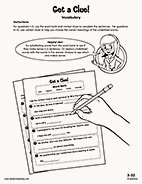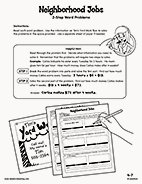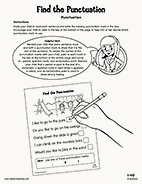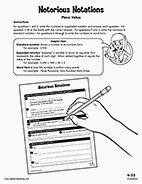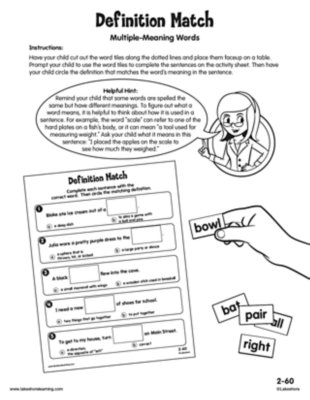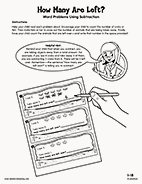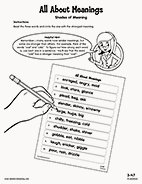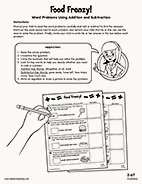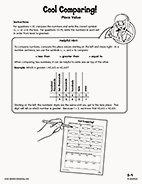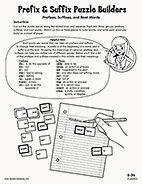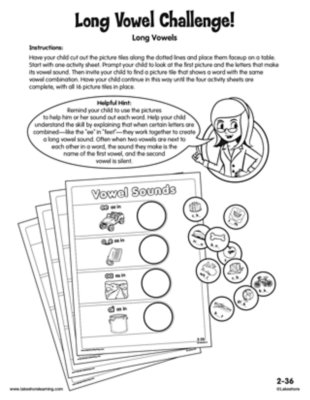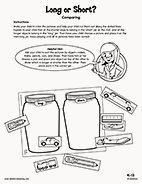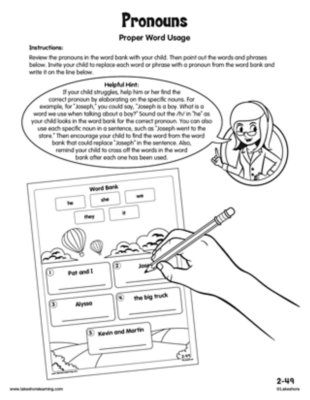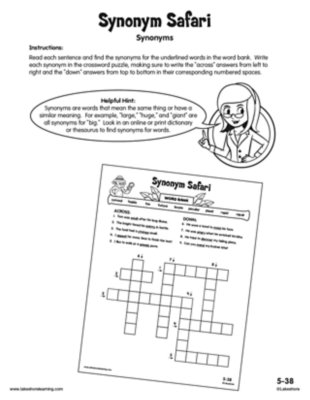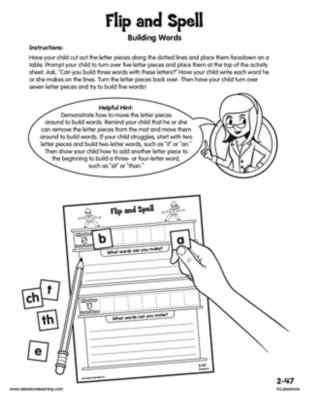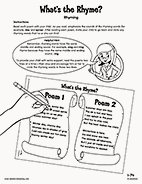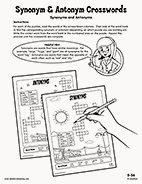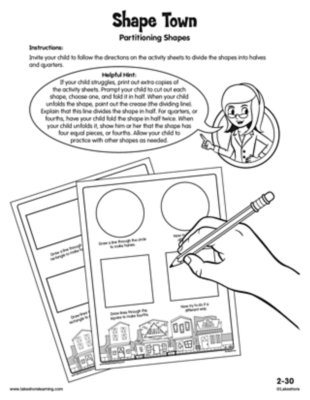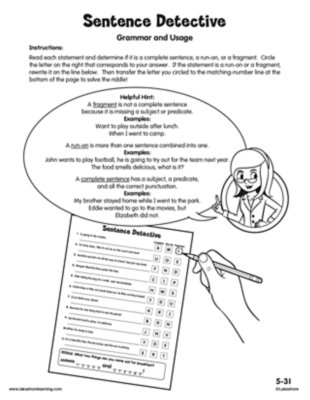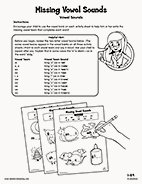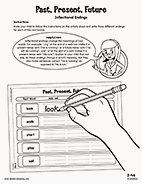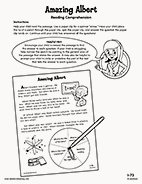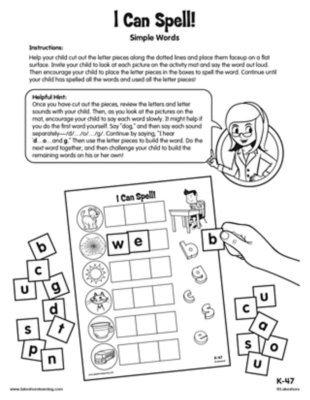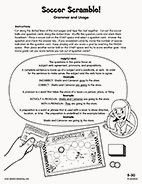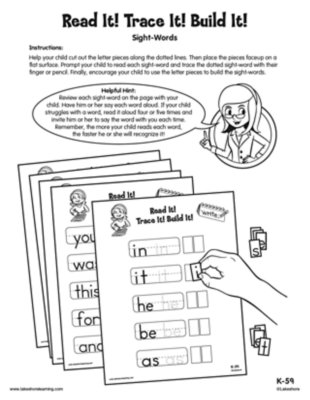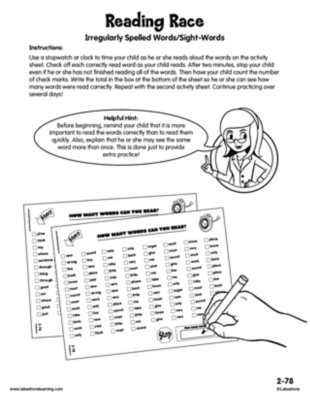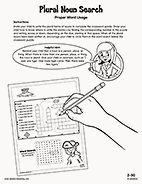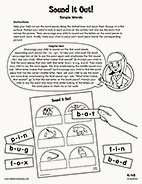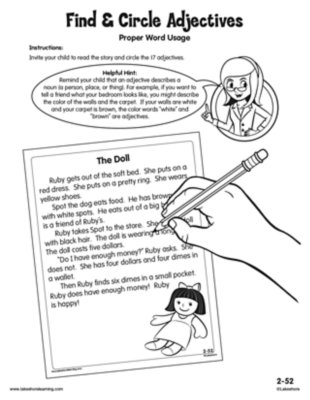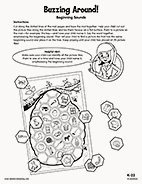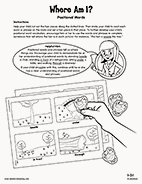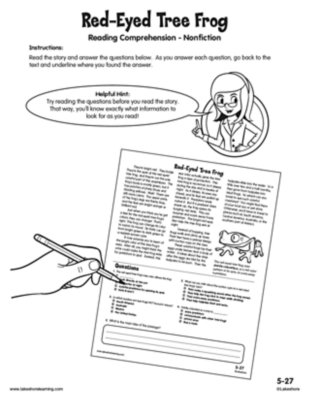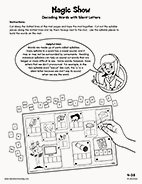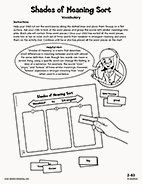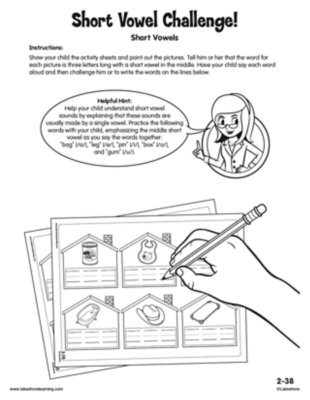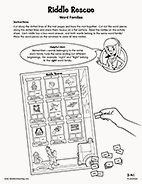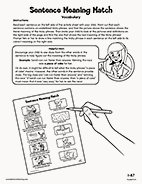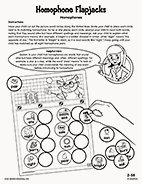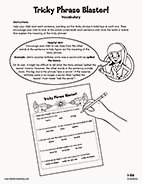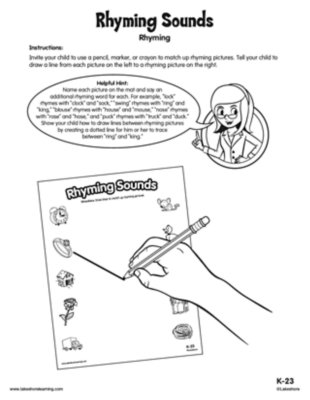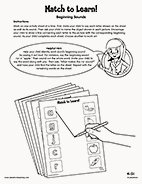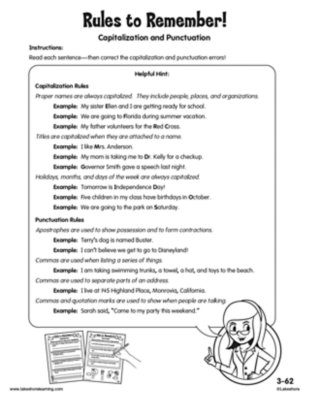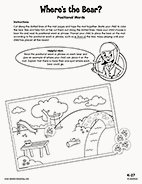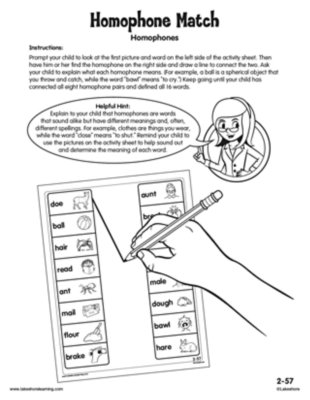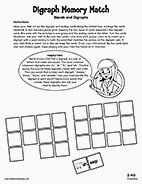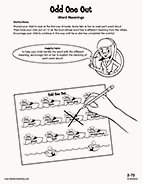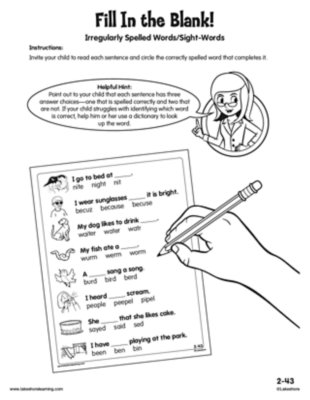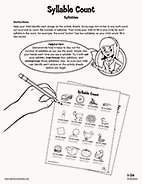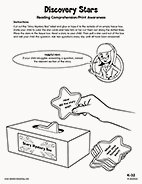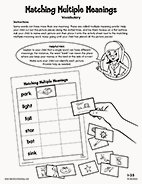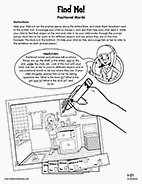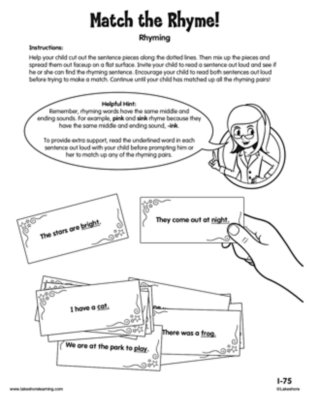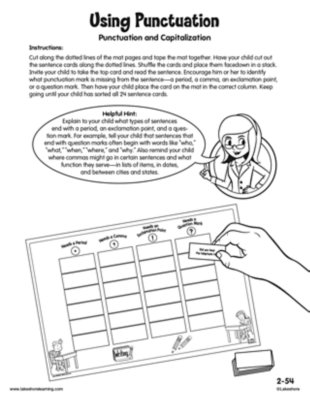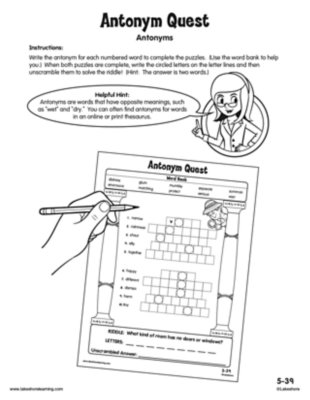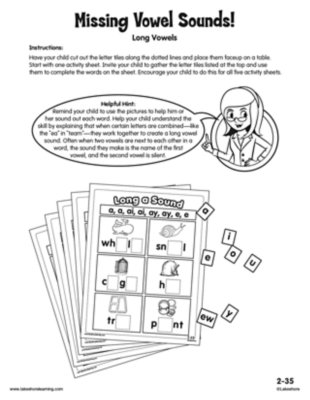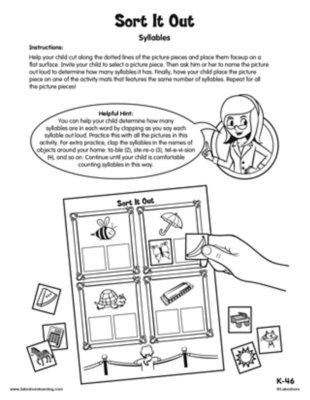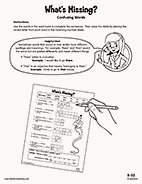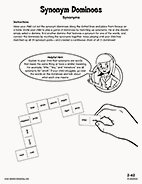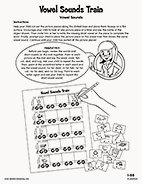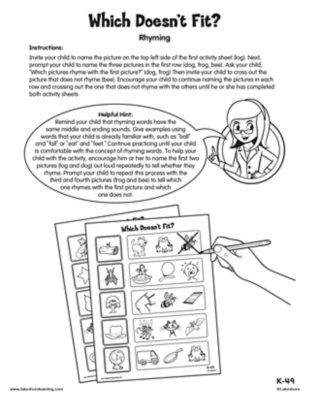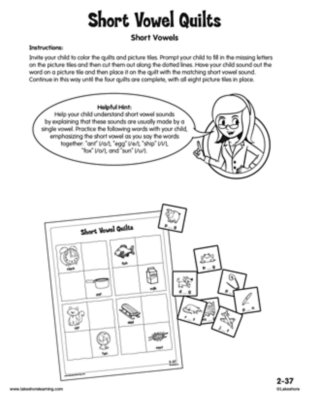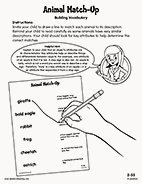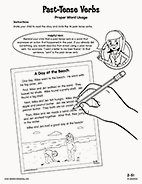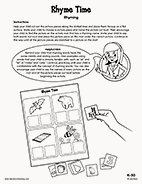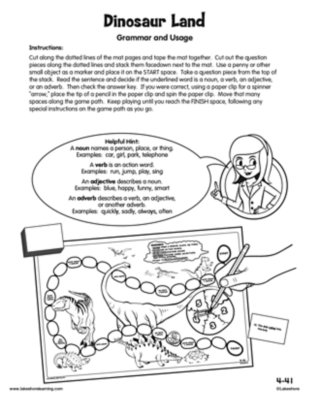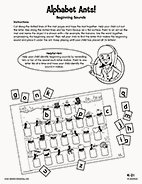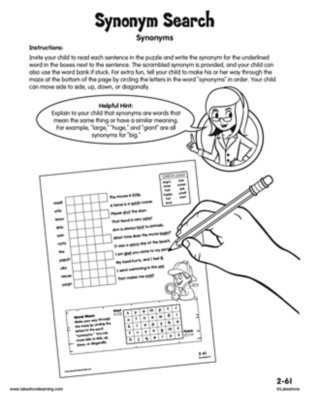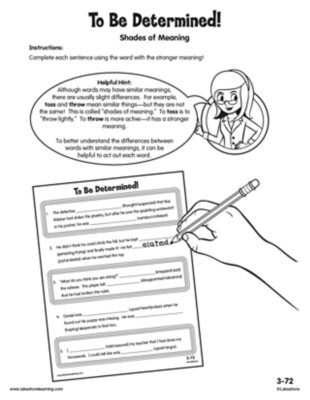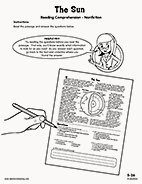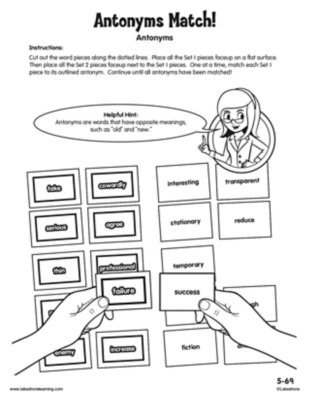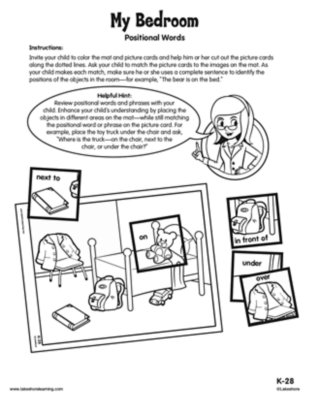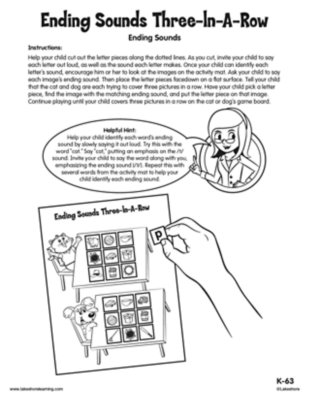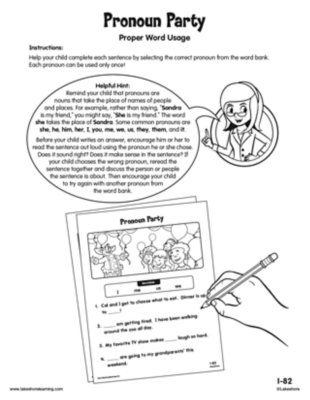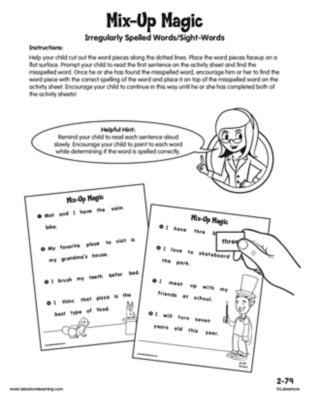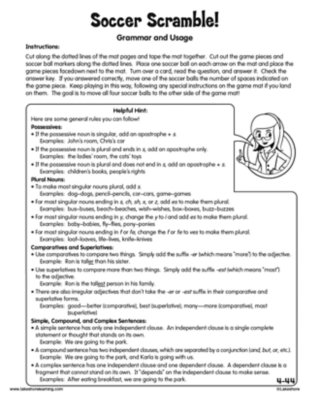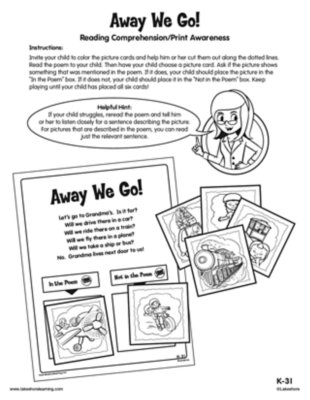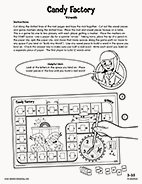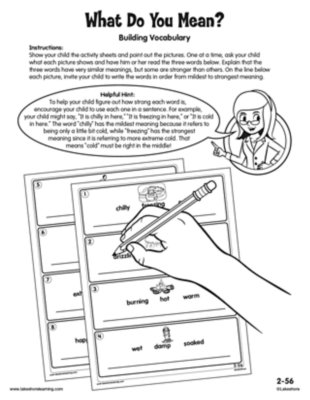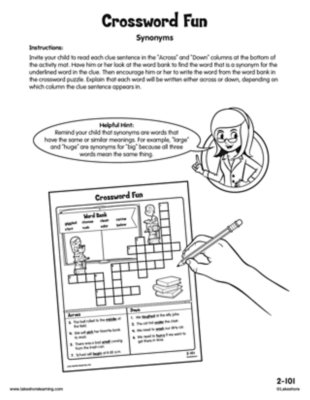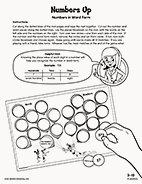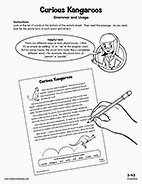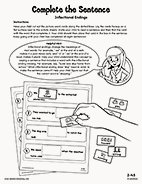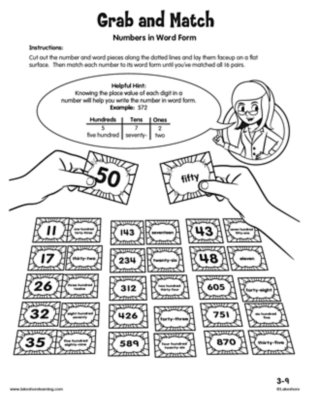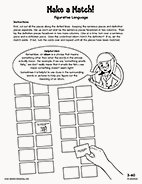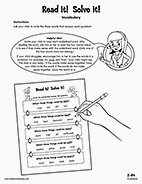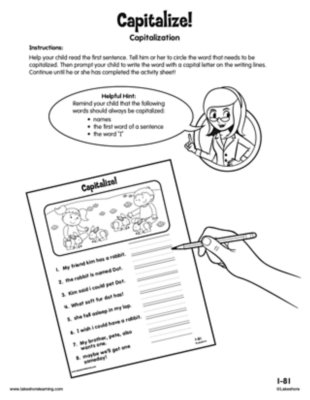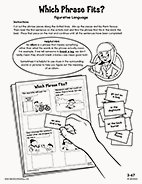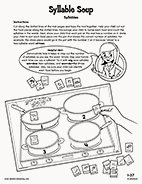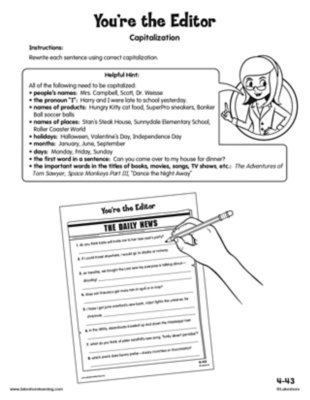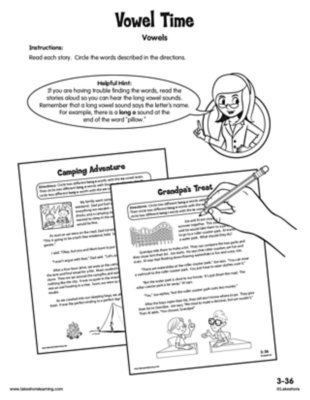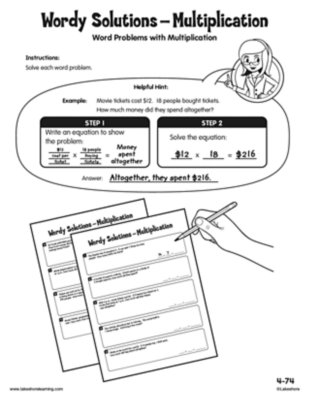
During fourth grade, your child will solve word problems that involve multiplication and division.
View worksheetWhen entering third grade, your child should be able to figure out the meanings of unknown words using a variety of strategies, such as looking at the context in which the word is used or consulting a dictionary.
View worksheetWhen entering fourth grade, your child should know how to solve two-step word problems involving addition, subtraction, multiplication and division.
View worksheetWhen entering first grade, your child should understand that sentences begin with a capital letter and that the word “I” is also capitalized. Your child should also be able to recognize and name the punctuation marks at the end of sentences, including periods, question marks and exclamation points.
View worksheetDuring fourth grade, your child will learn to identify the value of each digit in a multidigit number. Your child will also learn to read and write multidigit numbers in number, word and expanded form. For example, 765; seven hundred sixty-five; 700 + 60 + 5.
View worksheetWhen entering second grade, your child should be able to figure out the correct meanings of multiple-meaning words, such as knowing when the word “bat” refers to a baseball bat or a flying animal.
View worksheetWhen entering first grade, your child should be able to solve word problems that involve adding or subtracting within 10.
View worksheetWhen entering third grade, your child should be able to distinguish shades of meaning among closely related words—such as “toss,” “throw” and “hurl”—and identify which word has the strongest meaning.
View worksheetDuring second grade, your child will learn to solve one- and two-step word problems involving addition and subtraction within 100.
View worksheetWhen entering fifth grade, your child should be able to compare and round multidigit numbers. Your child should also be able to read and write multidigit numbers in number, word and expanded form. For example, 765; seven hundred sixty-five; 700 + 60 + 5.
View worksheetWhen entering fifth grade, your child should be able to use common, grade-appropriate Greek and Latin prefixes, suffixes and roots to figure out the meaning of a word. For example, “telegraph,” “photograph” and “autograph” all contain the Greek root “graph,” which refers to something that is written or drawn.
View worksheetWhen entering second grade, your child should understand that final -e and common vowel teams can be used to make long vowel sounds. For example, your child can recognize that the “oa” and “o_e” teams in the words “coat” and “rope” contain long “o” sounds. Your child should also be able to spell words using these vowel teams.
View worksheetWhen entering kindergarten, your child should be able to compare objects and describe their similarities and differences, including distinguishing by color, size, weight or shape. Your child should also be able to describe objects using the correct words, such as “big,” “small,” “short” and “tall.”
View worksheetWhen entering second grade, your child should be able to correctly use pronouns, singular and plural words, and past-, present- and future-tense words in sentences.
View worksheetWhen entering fifth grade, your child should be able to understand words by relating them to their opposites (antonyms) and to words with similar but not identical meanings (synonyms).
View worksheetWhen entering second grade, your child should be able to build and spell simple words by blending sounds together. For example, when given the letters “a,” “e,” “c,” “b,” “d,” “g” and “s,” your child should be able to use the letters to build and read at least three words.
View worksheetDuring first grade, your child will learn to recognize common spelling patterns, such as those found in rhyming words like “cat/rat/bat” and “run/fun/sun.”
View worksheetDuring fifth grade, your child will learn to use the relationship between synonyms (words with similar meanings) and antonyms (opposites) to better understand each of the words.
View worksheetWhen entering second grade, your child should be able to divide circles and rectangles into halves and fourths and describe the parts of each using words like “halves,” “fourths” and “quarters.”
View worksheetWhen entering fifth grade, your child should know how to correctly use words in sentences and should know many rules of English grammar and usage, including rules about relative pronouns (which, that), relative adverbs (where, when, why), the correct order of adjectives and more. Your child should also know how to use correct punctuation and capitalization when forming sentences and paragraphs.
View worksheetDuring first grade, your child will learn to distinguish between short and long vowels in spoken one-syllable words, such as the short “a” in “cap” and the long “a” in “cape.” Your child will also learn that final -e and common vowel teams can be used to make long vowel sounds, such as the long “o” in “rope” and “coat.”
View worksheetWhen entering second grade, your child should be able to read words with inflectional endings and use them correctly in sentences. Inflectional endings are letters that are added to words, such as “-ing,” “-es,” or “-ed.” For example, your child should be able to read the words “wishing,” “wishes” and “wished” and use them correctly in sentences.
View worksheetDuring first grade, your child will answer questions about key details in stories, such as identifying characters, settings and events, identifying who is telling the story and retelling the story in their own words. Your child will also learn to tell the difference between books that tell stories and books that provide information.
View worksheetDuring kindergarten, your child will learn to spell simple words by sounding them out, such as “c-a-t” and “f-o-x.”
View worksheetWhen entering fifth grade, your child should know how to correctly use words in sentences and should know many rules of English grammar and usage, including rules about relative pronouns (which, that), relative adverbs (where, when, why), the correct order of adjectives and more. Your child should also know how to use correct punctuation and capitalization when forming sentences and paragraphs.
View worksheetDuring kindergarten, your child will learn to read common, high-frequency words by sight, such as “the,” “of,” “to” and “you.”
View worksheetDuring second grade, your child will learn the correct spellings for many common, irregularly spelled words.
View worksheetWhen entering second grade, your child should be able to correctly use pronouns, singular and plural words, and past-, present- and future-tense words in sentences.
View worksheetDuring kindergarten, your child will learn to spell simple words by sounding them out, such as “c-a-t” and “f-o-x.”
View worksheetWhen entering second grade, your child should be able to correctly use pronouns, singular and plural words, and past-, present- and future-tense words in sentences.
View worksheetWhen entering kindergarten, your child should be able to identify the initial sounds in words.
View worksheetWhen entering first grade, your child should be able to correctly use positional words, such as “above” and “between.”
View worksheetWhen entering fifth grade, your child should be able to read, analyze and understand level-appropriate nonfiction reading passages, finding the main idea and important details, comprehending key words and phrases, comparing different accounts of the same event or topic and making inferences.
View worksheetWhen entering fourth grade, your child should be able to decode and spell multisyllable words and grade-appropriate irregularly spelled words.
View worksheetDuring second grade, your child will build vocabulary and learn to distinguish shades of meaning among closely related words, such as “toss,” “throw” and “hurl” or “thin,” “slender” and “skinny.”
View worksheetWhen entering second grade, your child should be able to distinguish short vowels from long vowels in spoken one-syllable words, such as hearing the short “a” sound in “cap.”
View worksheetWhen entering third grade, your child should be able to use common spelling patterns to decode and spell words easily, such as “cart,” “chart” and “smart.”
View worksheetDuring first grade, your child will learn to figure out the meanings of new words and multiple-meaning words based on the context in which they are used.
View worksheetWhen entering second grade, your child should be able to figure out the correct meanings of grade-appropriate homophones—words that sound the same but have different meaningss. For example, “to” and “two” or “eye” and “I.”
View worksheetDuring first grade, your child will learn to figure out the meanings of new words and multiple-meaning words based on the context in which they are used.
View worksheetWhen entering kindergarten, your child should be able to recognize and match words that rhyme.
View worksheetDuring kindergarten, your child will learn to identify beginning sounds in words and name the letter that makes them, such as identifying the “b” sound in “bat.”
View worksheetDuring kindergarten, your child will learn to identify beginning sounds in words and name the letter that makes them, such as identifying the “b” sound in “bat.”
View worksheetDuring third grade, your child will learn to capitalize the appropriate words in titles, such as the names of books and movies. Your child will also be expected to use commas in written addresses and with quotation marks to show when someone is speaking.
View worksheetWhen entering kindergarten, your child should be able to describe the positions of objects and shapes using positional words and phrases, such as “in front of,” “behind,” “over,” “under” and “next to.”
View worksheetWhen entering second grade, your child should be able to figure out the correct meanings of grade-appropriate homophones—words that sound the same but have different meaningss. For example, “to” and “two” or “eye” and “I.”
View worksheetDuring third grade, your child will learn to capitalize the appropriate words in titles, such as the names of books and movies. Your child will also be expected to use commas in written addresses and with quotation marks to show when someone is speaking.
View worksheetWhen entering fourth grade, your child should understand figurative language, such as idioms, and be able to distinguish between the literal and nonliteral meanings of words. For example, “It was a piece of cake!”
View worksheetWhen entering third grade, your child will be expected to know many rules of English grammar and usage, including how to correctly use adjectives, adverbs, pronouns, past-tense verbs and plural words.
View worksheetWhen entering second grade, your child should be able to read and spell words with consonant blends, such as “st,” “sp” and “bl,” as well as common consonant digraphs, such as “th,” “ch” and “sh.”
View worksheetDuring second grade, your child will learn to determine the meanings of grade-appropriate words based on the context in which they are used.
View worksheetWhen entering second grade, your child should recognize and read common grade-appropriate sight-words and words with irregular spellings, such as “said,” “come” and “does.”
View worksheetWhen entering first grade, your child should be able to count and say the syllables in spoken words. For example, your child should understand that “kitten” has two syllables: kit•ten.
View worksheetWhen entering kindergarten, your child should be able to listen to a story and ask and answer questions about key details, such as identifying characters and events and retelling the story in their own words. Your child should also understand the basic features of print, such as differentiating letters from words, recognizing that words have spaces between them and distinguishing the roles of authors and illustrators.
View worksheetWhen entering first grade, your child should be able to figure out the meanings of unfamiliar words and multiple-meanings words that they encounter in kindergarten-level texts.
View worksheetWhen entering first grade, your child should be able to correctly use positional words, such as “above” and “between.”
View worksheetDuring first grade, your child will learn to recognize common spelling patterns, such as those found in rhyming words like “cat/rat/bat” and “run/fun/sun.”
View worksheetWhen entering second grade, your child should remember to capitalize dates and people’s names. Your child will also be expected to use punctuation at the ends of sentences. Your child should also use commas in dates and to separate words in a series. For example, “I like apples, bananas, and strawberries.”
View worksheetWhen entering fifth grade, your child should be able to understand words by relating them to their opposites (antonyms) and to words with similar but not identical meanings (synonyms).
View worksheetWhen entering second grade, your child should understand that final -e and common vowel teams can be used to make long vowel sounds. For example, your child can recognize that the “oa” and “o_e” teams in the words “coat” and “rope” contain long “o” sounds. Your child should also be able to spell words using these vowel teams.
View worksheetWhen entering kindergarten, your child should be able to compare objects and describe their similarities and differences, including distinguishing by color, size, weight or shape. Your child should also be able to describe objects using the correct words, such as “big,” “small,” “short” and “tall.”
View worksheetDuring kindergarten, your child will learn to count and say the syllables in spoken words. For example, your child should understand that “kitten” has two syllables: kit•ten.
View worksheetWhen entering fifth grade, your child should be able to correctly use frequently confused words, such as “to” and “two” or “there” and “their.”
View worksheetWhen entering second grade, your child should be able to identify words with similar meanings and distinguish subtle differences between them. For example, “large” and “gigantic” are synonyms, but “gigantic” has a stronger meaning than “large.”
View worksheetDuring first grade, your child will learn to distinguish between short and long vowels in spoken one-syllable words, such as the short “a” in “cap” and the long “a” in “cape.” Your child will also learn that final -e and common vowel teams can be used to make long vowel sounds, such as the long “o” in “rope” and “coat.”
View worksheetDuring kindergarten, your child will learn to recognize and create rhyming words.
View worksheetWhen entering second grade, your child should be able to distinguish short vowels from long vowels in spoken one-syllable words, such as hearing the short “a” sound in “cap.”
View worksheetWhen entering second grade, your child should be able to define words by category and key attributes. For example, “A duck is a bird that swims.”
View worksheetWhen entering second grade, your child should be able to correctly use pronouns, singular and plural words, and past-, present- and future-tense words in sentences.
View worksheetDuring kindergarten, your child will learn to recognize and create rhyming words.
View worksheetWhen entering fourth grade, your child should know how to correctly use words in sentences and should know many rules of English grammar, including parts of speech, regular and irregular plural nouns, regular and irregular verbs, verb tenses, subject-verb agreement, sentence structure and more.
View worksheetWhen entering kindergarten, your child should be able to identify the initial sounds in words.
View worksheetWhen entering second grade, your child should be able to identify words with similar meanings and distinguish subtle differences between them. For example, “large” and “gigantic” are synonyms, but “gigantic” has a stronger meaning than “large.”
View worksheetDuring third grade, your child will be expected to distinguish between shades of meaning among related words—such as “wondered,” “suspected,” “believed” and “knew”—and sort the words in order from the weakest to the strongest meaning.
View worksheetWhen entering fifth grade, your child should be able to read, analyze and understand level-appropriate nonfiction reading passages, finding the main idea and important details, comprehending key words and phrases, comparing different accounts of the same event or topic and making inferences.
View worksheetDuring fifth grade, your child will learn to use the relationship between synonyms (words with similar meanings) and antonyms (opposites) to better understand each of the words.
View worksheetWhen entering kindergarten, your child should be able to describe the positions of objects and shapes using positional words and phrases, such as “in front of,” “behind,” “over,” “under” and “next to.”
View worksheetDuring kindergarten, your child will learn to identify the ending sounds in simple words and identify the letter that makes them, such as identifying the “n” sound in “pen.”
View worksheetDuring first grade, your child will learn subtleties in words’ meanings and make real-life connections between words and their use, such as understanding that both a bed and sofa could be called cozy.
View worksheetDuring second grade, your child will learn the correct spellings for many common, irregularly spelled words.
View worksheetWhen entering fourth grade, your child should know how to correctly use words in sentences and should know many rules of English grammar, including parts of speech, regular and irregular plural nouns, regular and irregular verbs, verb tenses, subject-verb agreement, sentence structure and more.
View worksheetWhen entering kindergarten, your child should be able to listen to a story and ask and answer questions about key details, such as identifying characters and events and retelling the story in their own words. Your child should also understand the basic features of print, such as differentiating letters from words, recognizing that words have spaces between them and distinguishing the roles of authors and illustrators.
View worksheetWhen entering third grade, your child should be able to distinguish long and short vowels when reading regularly spelled one-syllable words, such as “mad” and “made,” and know how to spell words using common vowel teams, such as “ai,” “ea,” “ee,” “oa” and “oi.”
View worksheetWhen entering second grade, your child should be able to define words by category and key attributes. For example, “A duck is a bird that swims.”
View worksheetDuring second grade, your child will learn to identify synonyms of words and use the synonyms in sentences.
View worksheetWhen entering third grade, your child should be able to read and write numbers within 1,000 using numerals and number words.
View worksheetWhen entering third grade, your child will be expected to know many rules of English grammar and usage, including how to correctly use adjectives, adverbs, pronouns, past-tense verbs and plural words.
View worksheetWhen entering second grade, your child should be able to read words with inflectional endings and use them correctly in sentences. Inflectional endings are letters that are added to words, such as “-ing,” “-es,” or “-ed.” For example, your child should be able to read the words “wishing,” “wishes” and “wished” and use them correctly in sentences.
View worksheetWhen entering third grade, your child should be able to read and write numbers within 1,000 using numerals and number words.
View worksheetDuring third grade, your child will learn to understand figurative language, such as idioms, and distinguish between the literal and nonliteral meanings of words. For example, “It was a piece of cake!”
View worksheetDuring second grade, your child will build vocabulary and learn to distinguish shades of meaning among closely related words, such as “toss,” “throw” and “hurl” or “thin,” “slender” and “skinny.”
View worksheetDuring first grade, your child will learn to capitalize dates and people’s names. Your child will also learn how to use punctuation at the ends of sentences, as well as how to use commas in dates and to separate words in a series. For example, “I like apples, bananas, and strawberries.”
View worksheetDuring third grade, your child will learn to understand figurative language, such as idioms, and distinguish between the literal and nonliteral meanings of words. For example, “It was a piece of cake!”
View worksheetWhen entering first grade, your child should be able to count and say the syllables in spoken words. For example, your child should understand that “kitten” has two syllables: kit•ten.
View worksheetWhen entering fourth grade, your child should remember to capitalize the appropriate words in titles, such as the names of books and movies. Your child should also remember to use commas in written addresses and with quotation marks to show when someone is speaking.
View worksheetWhen entering third grade, your child should be able to distinguish long and short vowels when reading regularly spelled one-syllable words, such as “mad” and “made,” and know how to spell words using common vowel teams, such as “ai,” “ea,” “ee,” “oa” and “oi.”
View worksheet
